The Freezer is Your Kitchen’s Secret Weapon
Your freezer is so much more than just a storage space for ice cream, ice cubes, and chicken breasts. Your freezer is your kitchen’s secret weapon, the perfect icy cold environment for extending the shelf life of some of your favorite ingredients and leftovers.
With this introduction, let’s look at all the things that maybe you didn’t you could freeze (thanks to the research I found on the site, www.greatist.com):
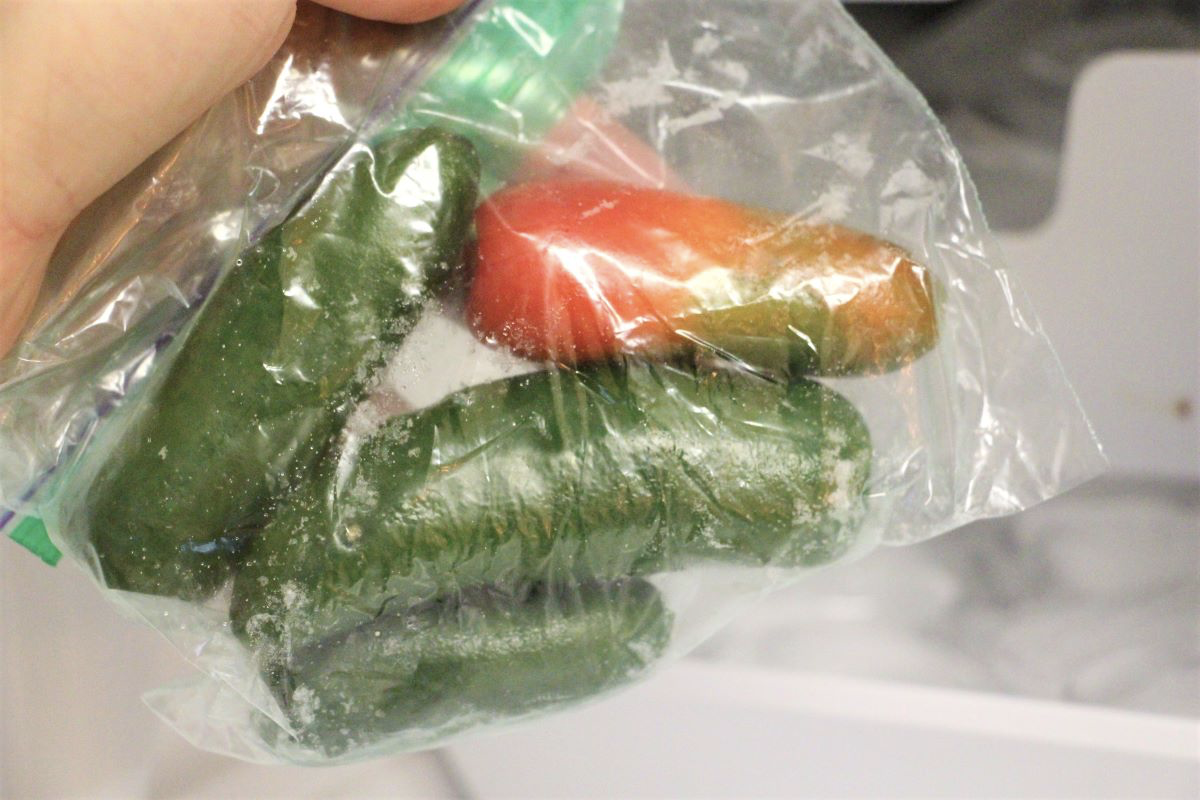
JALAPENOS (and other hot peppers). Freezer life: 9 months (but they’ll start to lose flavor the longer they’re frozen). When ready to use, grate them over a microplane while still-frozen. The seeds won’t go through the microplane, so you don’t even need to worry about deseeding them, and because the peppers are frozen you’re less likely to get the spicy capsaicin juices all over your hands (though you still should wear gloves while handling them).
BROCCOLI STALKS. Freezer life: 6–8 months. Frozen broccoli florets are not unusual, but how many of you know that after trimming the florets off of broccoli stalks you can freeze just the broccoli stalks? They’re packed full of flavor and perfect for making creamy broccoli soup.
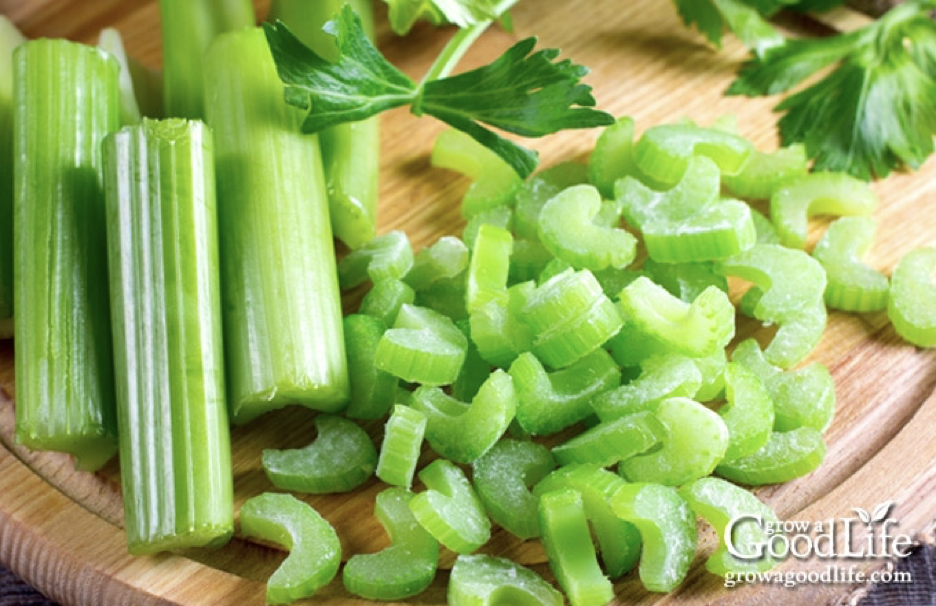
CELERY. Freezer life: up to 2 months (but to extend its shelf life to a year, blanch it first.) Break leftover celery into individual stalks, dice or chunk them, arrange them on a sheet pan, and freeze. Transfer them to an airtight bag, press out any air and seal. While it won’t defrost into crunchy sticks, it will still be suitable for cooking down in soups and stews.
FRESH HERBS. Freezer life: 6–9 months. Fresh herbs can be frozen in ice cube trays submerged in olive oil or melted butter. You can freeze whole leaves, but for bigger or heartier herbs like basil and rosemary, it’s better to mince or chop them first.
To use, toss the whole ice cube into a skillet or pot with your food and let the oil melt into the dish. This method only works with recipes that can handle the additional oil, like pasta and a lot of sauces. You won’t be able to defrost the fresh herbs and mince or dice them, or use them as a garnish.

SEEDLESS GRAPES. Freezer life: 12 months. Frozen grapes superior to room temperature grapes in every way. They’re icy, fruity, and sweet and so fun to crunch on, especially in the summer. Once you try storing grapes this way, you’ll never want to keep them at room temp ever again.
AVOCADOS. Freezer life: 4–6 months. With the peels and pits removed, toss the avocado pieces with a bit of lemon juice to prevent browning and freeze them on a silicone- or parchment-lined sheet pan. Then transfer them to a bag, press out any air, and store in the freezer. You can add these frozen avocado pieces directly to smoothies without defrosting first. You can also freeze mashed or pureed avocado (with a bit of lemon juice) in an ice cube tray or container — whatever is easiest for you.
BUTTER. Freezer life: 5 months for unsalted butter, 9 months for salted. If you’re an avid baker, then you might want to keep one or two boxes in the freezer “for emergencies” and have another one or two in the fridge. It can extend the shelf life by several months if you freeze butter prior to the “use by” date on the package. After that it’ll start to lose some flavor, but it’ll still be safe to use.
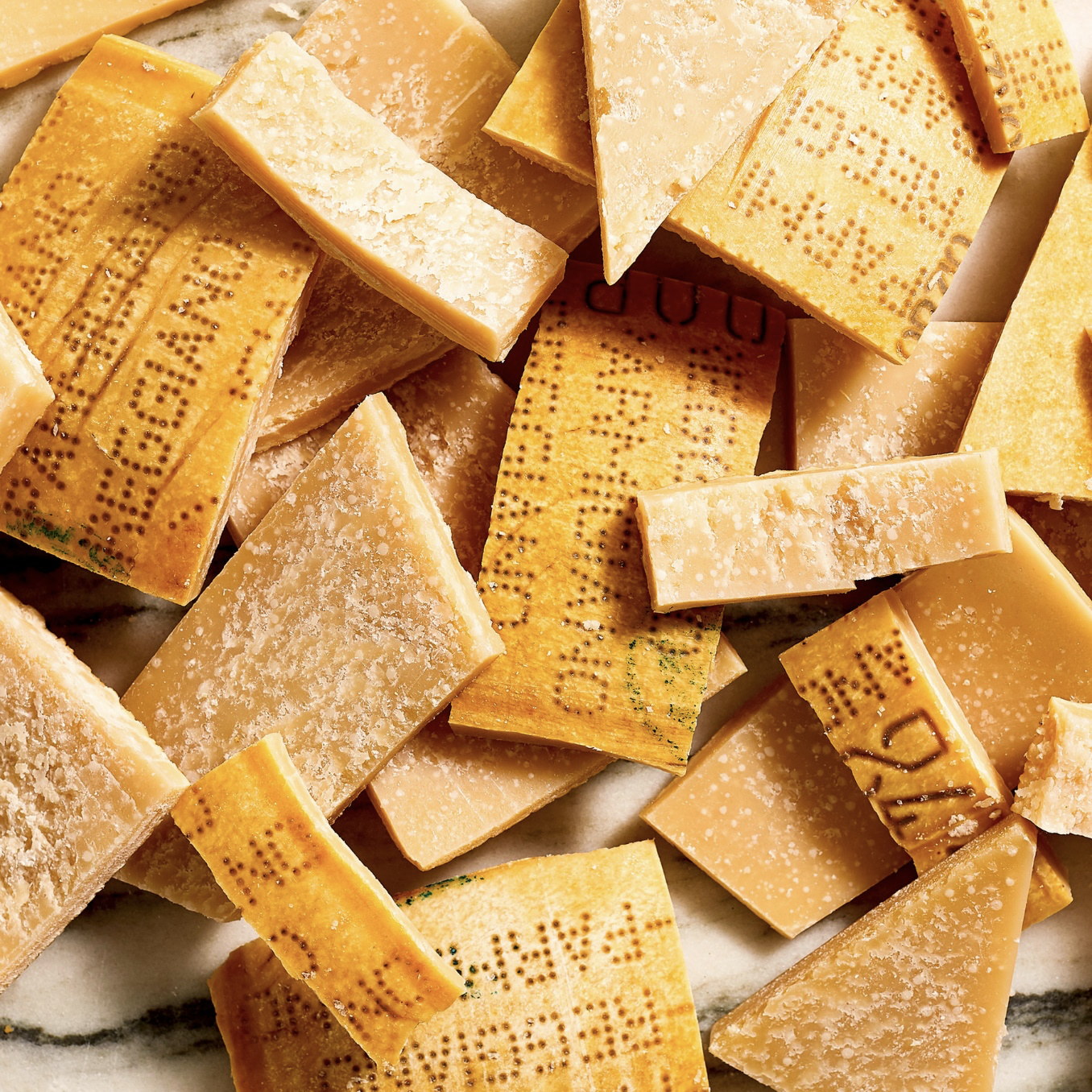
PARMESAN RINDS. Freezer life: indefinitely. Parmesan rinds are entirely natural and edible, and not, as many people believe, made of wax. Stash these in the freezer and drop one or two into soups, stews, broths, and sauces — basically anything that cooks low and slow. The rinds add a nice umami flavor and they get super soft and melty, making them a real treat for whoever finds them in their bowl.
FLOUR. Freezer life: 6 months to a year. The freezer is the best place to keep your flour free from pests and extend its shelf life. Of course, most of us don’t have the freezer space to keep all our flour in the freezer all of the time, but this is particularly handy for whole grain and other specialty flours that you don’t use regularly. Make sure it’s in an airtight container so it doesn’t absorb any funky freezer smells, but otherwise this can extend the shelf life of your flour for up to a year.
YEAST. Freezer life: Officially, unopened yeast will stay good in the freezer up to 2 years. Once opened, official word is yeast will stay good in the freezer for 6 months, but professional bakers say that both instant and active dry yeast can stay good in the freezer for 2+ years.
Yeast has a reputation for being delicate and easily damaged, but that’s really only at high temperatures. In the freezer, this living organism goes dormant until used. This method is much better than storing it in the back of a drawer or cupboard. And there’s no need to defrost or let it come to room temperature first.
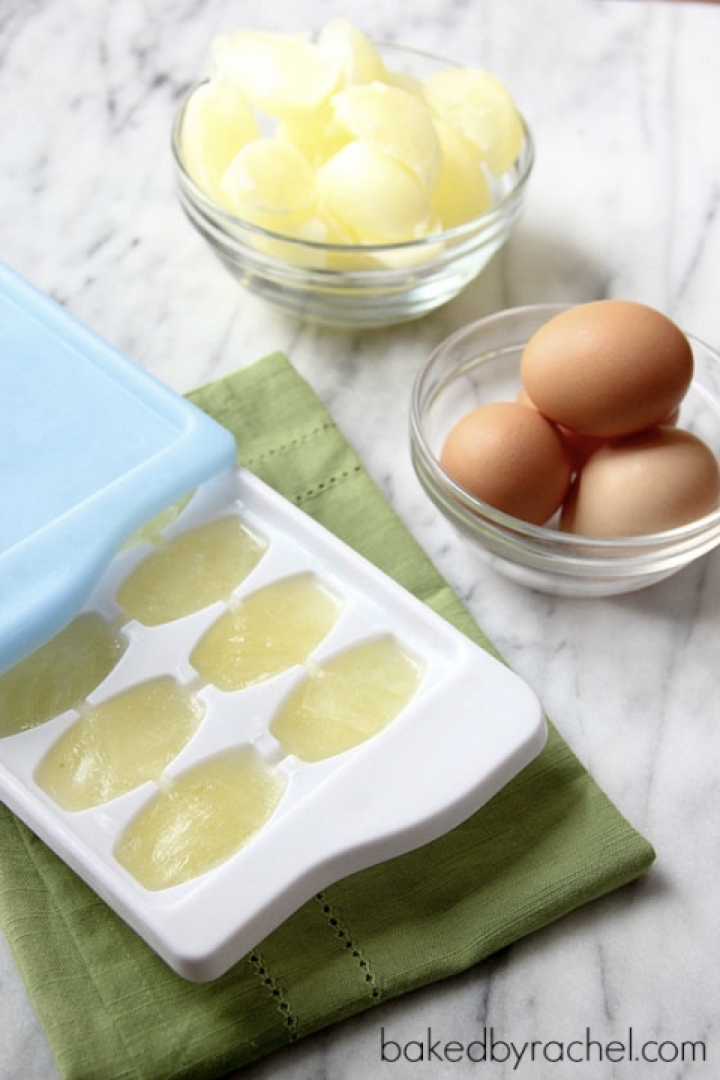
EGG WHITES. Freezer life: 1 year. If you’ve ever made something that only uses egg yolks, you know how annoying it can be to end up with a bunch of egg whites and no plan for how to use them. The good news is egg whites freeze beautifully, so you can put off making that decision for another day.
When ready to use, simply defrost them in the fridge. Use them for egg white omelets, whip them up to leaven sponge cakes, or use them to make crispy meringues and pavlovas.
You can freeze egg yolks and whole eggs too (but they can have a rather odd texture when defrosted). To freeze whole eggs, beat them first so that the egg and yolk freeze together.
TOMATO PASTE. Freezer life: 3–6 months. If you’ve got an open can of tomato paste (because you needed a mere tablespoon for a recipe and couldn’t bring yourself to toss the extra) and you know you’re not going to use before it goes bad, freeze it. By the way, this is another scenario where ice cube trays are the best freezing vessel. Freeze pre-measured portions, then pop them out of the tray and stash them in a bag or airtight container for future use.
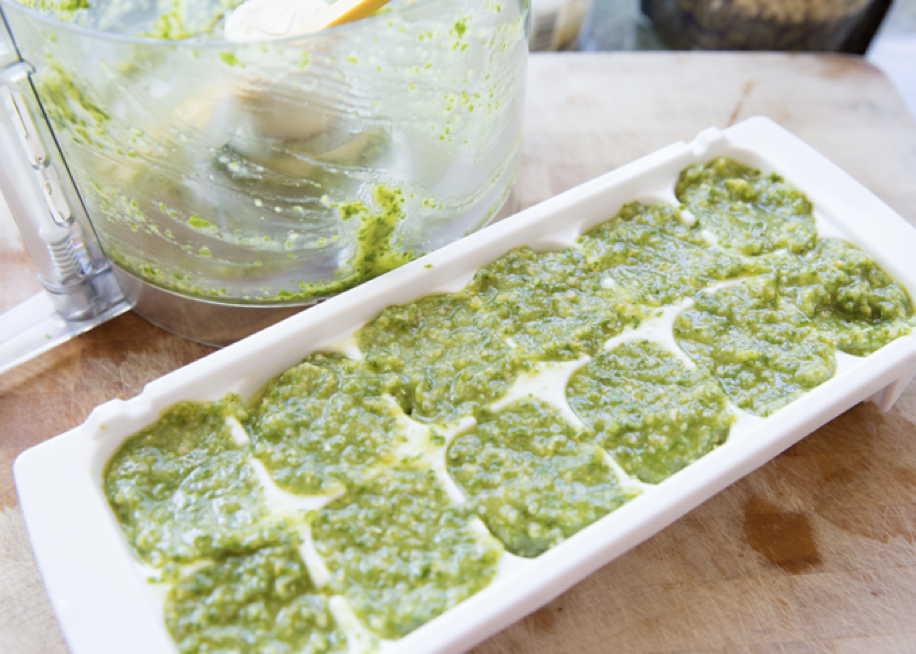
PESTO. Freezer life: 3–6 months. Next time you make fresh pesto, pack it into an ice cube tray or airtight, freezer-safe container; cover it with a layer of olive oil to prevent the basil from oxidizing, and freeze it. Best practices say pesto will last 3 to 6 months before it starts to loose flavor, but the folks at www.greatist.com say pesto can stay good in the freezer for up to a year and still be super delicious.
COOKED MEATBALLS. Freezer life: 3–4 months. Of course, you can freeze meatballs, you know that. But the www.greatest folks suggest that the next time you make spaghetti and meatballs, don’t put all of the meatballs into the sauce right away. Count out the number you actually want to eat, then freeze the rest, sauce-free for maximum versatility. They’ll stay good in the freezer for several months and next time you want meatballs for your spaghetti sauce you can let them defrost right in the sauce.
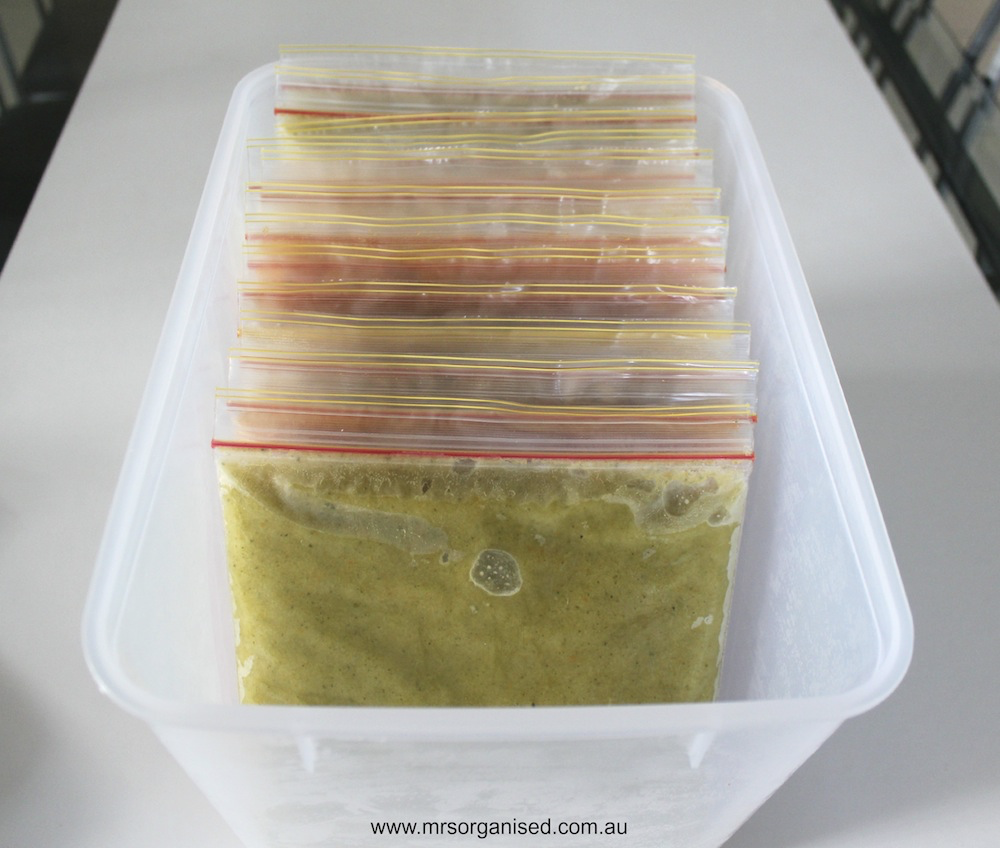
Finally, SOUP BASE. Freezer life: 2–3 months. Soup base is not the same as chicken and veggie stock (which we all know to freeze). Sometimes called cooking base, it’s a thicker and more concentrated flavoring compound used in place of stock for the creation of soups, sauces, and gravies.
Pop your soup base in a resealable baggie, lay it flat on a sheet pan and freeze it. Then remove it from the sheet pan and you can have a whole library of soup bases lined up in your freezer for when you’re feeling hungry. Just add some fresh herbs, veggies, cooked beans, or meat, and you’ll quickly forget you’re eating leftovers!
With this introduction, let’s look at all the things that maybe you didn’t you could freeze (thanks to the research I found on the site, www.greatist.com):

JALAPENOS (and other hot peppers). Freezer life: 9 months (but they’ll start to lose flavor the longer they’re frozen). When ready to use, grate them over a microplane while still-frozen. The seeds won’t go through the microplane, so you don’t even need to worry about deseeding them, and because the peppers are frozen you’re less likely to get the spicy capsaicin juices all over your hands (though you still should wear gloves while handling them).
BROCCOLI STALKS. Freezer life: 6–8 months. Frozen broccoli florets are not unusual, but how many of you know that after trimming the florets off of broccoli stalks you can freeze just the broccoli stalks? They’re packed full of flavor and perfect for making creamy broccoli soup.

CELERY. Freezer life: up to 2 months (but to extend its shelf life to a year, blanch it first.) Break leftover celery into individual stalks, dice or chunk them, arrange them on a sheet pan, and freeze. Transfer them to an airtight bag, press out any air and seal. While it won’t defrost into crunchy sticks, it will still be suitable for cooking down in soups and stews.
FRESH HERBS. Freezer life: 6–9 months. Fresh herbs can be frozen in ice cube trays submerged in olive oil or melted butter. You can freeze whole leaves, but for bigger or heartier herbs like basil and rosemary, it’s better to mince or chop them first.
To use, toss the whole ice cube into a skillet or pot with your food and let the oil melt into the dish. This method only works with recipes that can handle the additional oil, like pasta and a lot of sauces. You won’t be able to defrost the fresh herbs and mince or dice them, or use them as a garnish.

SEEDLESS GRAPES. Freezer life: 12 months. Frozen grapes superior to room temperature grapes in every way. They’re icy, fruity, and sweet and so fun to crunch on, especially in the summer. Once you try storing grapes this way, you’ll never want to keep them at room temp ever again.
AVOCADOS. Freezer life: 4–6 months. With the peels and pits removed, toss the avocado pieces with a bit of lemon juice to prevent browning and freeze them on a silicone- or parchment-lined sheet pan. Then transfer them to a bag, press out any air, and store in the freezer. You can add these frozen avocado pieces directly to smoothies without defrosting first. You can also freeze mashed or pureed avocado (with a bit of lemon juice) in an ice cube tray or container — whatever is easiest for you.
BUTTER. Freezer life: 5 months for unsalted butter, 9 months for salted. If you’re an avid baker, then you might want to keep one or two boxes in the freezer “for emergencies” and have another one or two in the fridge. It can extend the shelf life by several months if you freeze butter prior to the “use by” date on the package. After that it’ll start to lose some flavor, but it’ll still be safe to use.

PARMESAN RINDS. Freezer life: indefinitely. Parmesan rinds are entirely natural and edible, and not, as many people believe, made of wax. Stash these in the freezer and drop one or two into soups, stews, broths, and sauces — basically anything that cooks low and slow. The rinds add a nice umami flavor and they get super soft and melty, making them a real treat for whoever finds them in their bowl.
FLOUR. Freezer life: 6 months to a year. The freezer is the best place to keep your flour free from pests and extend its shelf life. Of course, most of us don’t have the freezer space to keep all our flour in the freezer all of the time, but this is particularly handy for whole grain and other specialty flours that you don’t use regularly. Make sure it’s in an airtight container so it doesn’t absorb any funky freezer smells, but otherwise this can extend the shelf life of your flour for up to a year.
YEAST. Freezer life: Officially, unopened yeast will stay good in the freezer up to 2 years. Once opened, official word is yeast will stay good in the freezer for 6 months, but professional bakers say that both instant and active dry yeast can stay good in the freezer for 2+ years.
Yeast has a reputation for being delicate and easily damaged, but that’s really only at high temperatures. In the freezer, this living organism goes dormant until used. This method is much better than storing it in the back of a drawer or cupboard. And there’s no need to defrost or let it come to room temperature first.

EGG WHITES. Freezer life: 1 year. If you’ve ever made something that only uses egg yolks, you know how annoying it can be to end up with a bunch of egg whites and no plan for how to use them. The good news is egg whites freeze beautifully, so you can put off making that decision for another day.
When ready to use, simply defrost them in the fridge. Use them for egg white omelets, whip them up to leaven sponge cakes, or use them to make crispy meringues and pavlovas.
You can freeze egg yolks and whole eggs too (but they can have a rather odd texture when defrosted). To freeze whole eggs, beat them first so that the egg and yolk freeze together.
TOMATO PASTE. Freezer life: 3–6 months. If you’ve got an open can of tomato paste (because you needed a mere tablespoon for a recipe and couldn’t bring yourself to toss the extra) and you know you’re not going to use before it goes bad, freeze it. By the way, this is another scenario where ice cube trays are the best freezing vessel. Freeze pre-measured portions, then pop them out of the tray and stash them in a bag or airtight container for future use.

PESTO. Freezer life: 3–6 months. Next time you make fresh pesto, pack it into an ice cube tray or airtight, freezer-safe container; cover it with a layer of olive oil to prevent the basil from oxidizing, and freeze it. Best practices say pesto will last 3 to 6 months before it starts to loose flavor, but the folks at www.greatist.com say pesto can stay good in the freezer for up to a year and still be super delicious.
COOKED MEATBALLS. Freezer life: 3–4 months. Of course, you can freeze meatballs, you know that. But the www.greatest folks suggest that the next time you make spaghetti and meatballs, don’t put all of the meatballs into the sauce right away. Count out the number you actually want to eat, then freeze the rest, sauce-free for maximum versatility. They’ll stay good in the freezer for several months and next time you want meatballs for your spaghetti sauce you can let them defrost right in the sauce.

Finally, SOUP BASE. Freezer life: 2–3 months. Soup base is not the same as chicken and veggie stock (which we all know to freeze). Sometimes called cooking base, it’s a thicker and more concentrated flavoring compound used in place of stock for the creation of soups, sauces, and gravies.
Pop your soup base in a resealable baggie, lay it flat on a sheet pan and freeze it. Then remove it from the sheet pan and you can have a whole library of soup bases lined up in your freezer for when you’re feeling hungry. Just add some fresh herbs, veggies, cooked beans, or meat, and you’ll quickly forget you’re eating leftovers!
Sources:
- www.peppergeek.com
- www.growagoodlife.com
- www.sun-world.com.au
- www.nytimes.com
- www.bakedbyrachel.com
- www.joyineveryseason.com
- www.mrsorganised.com.au
 Alice Osborne
Alice Osborne
Weekly Newsletter Contributor since 2006
Email the author! alice@dvo.com
